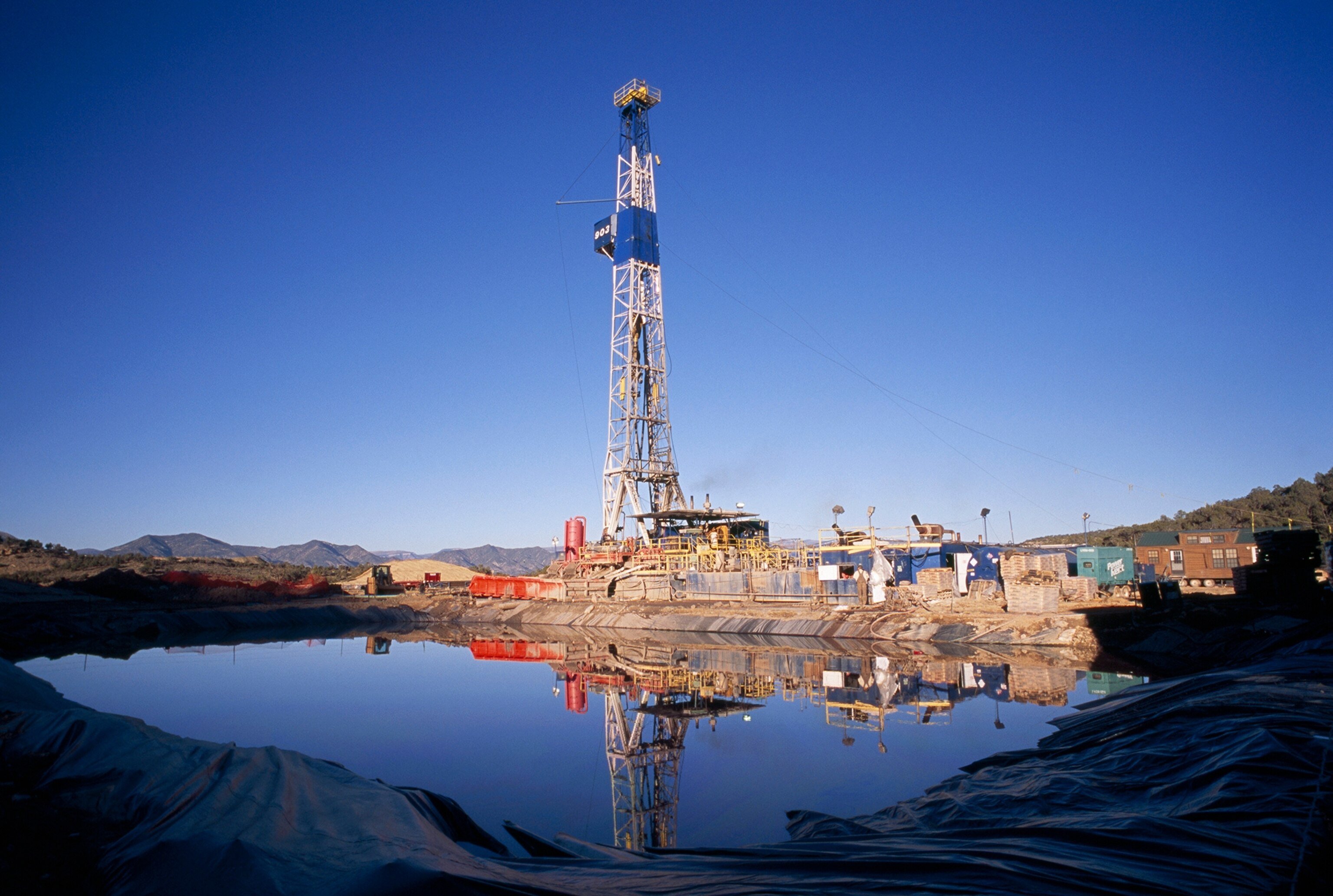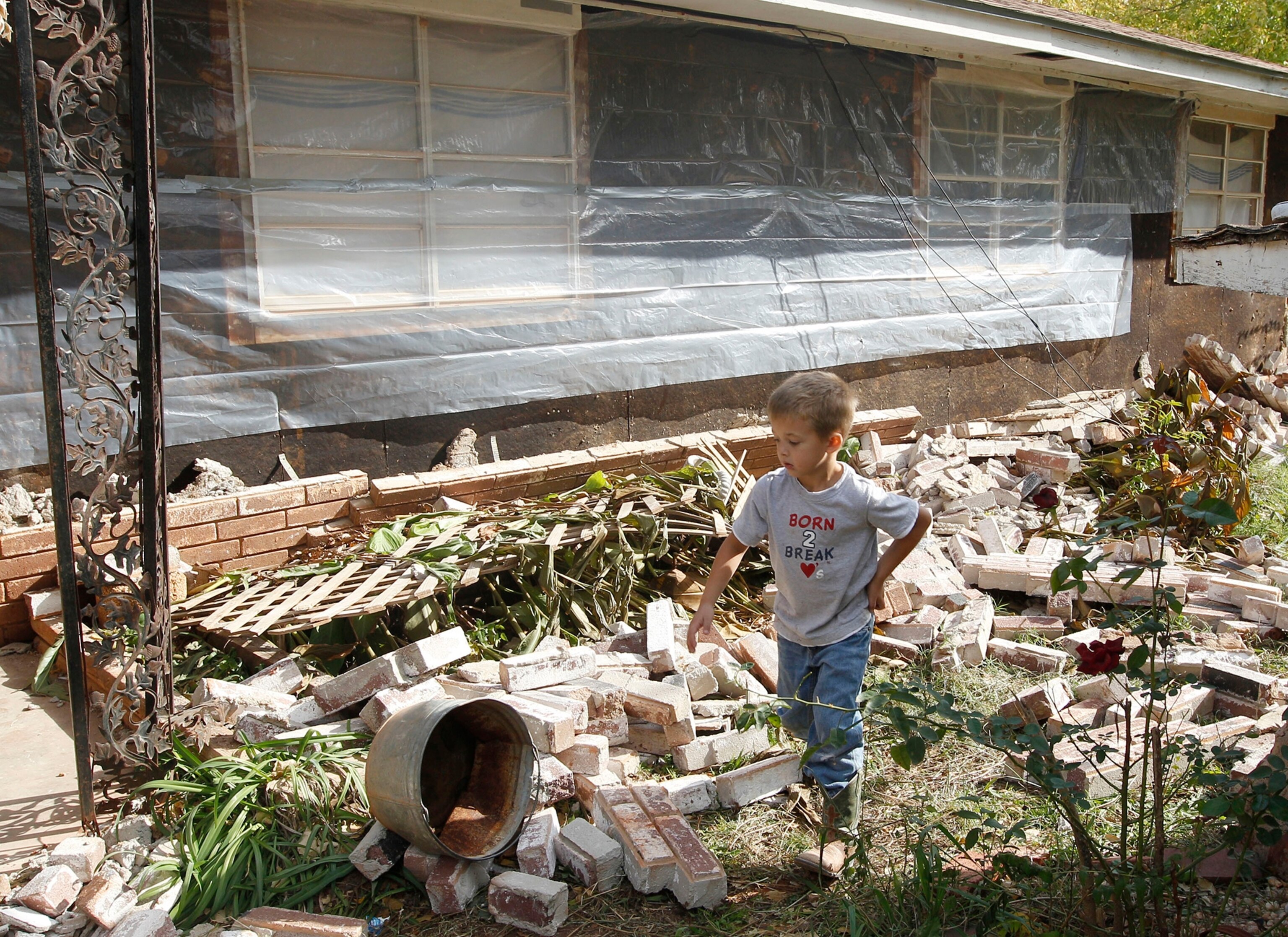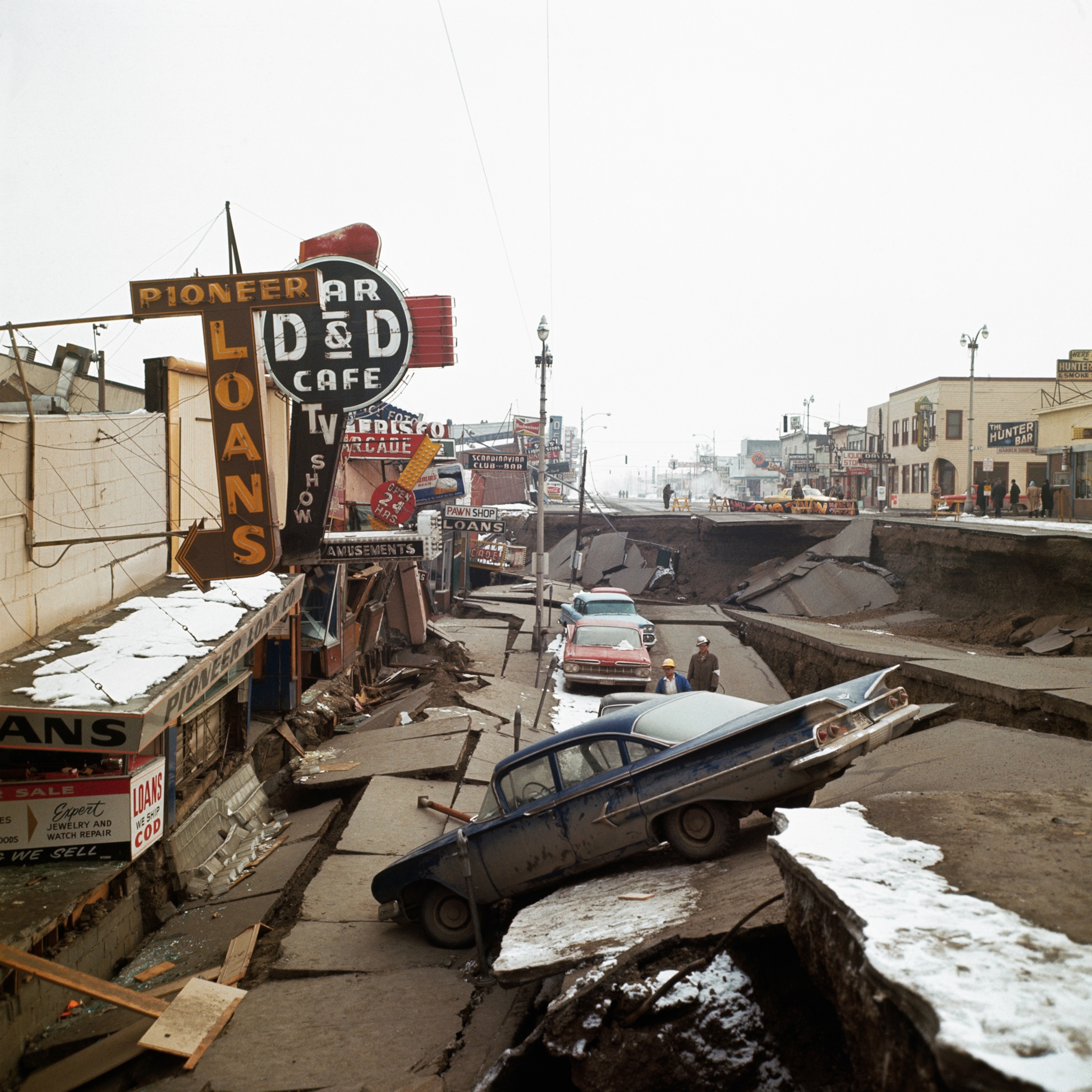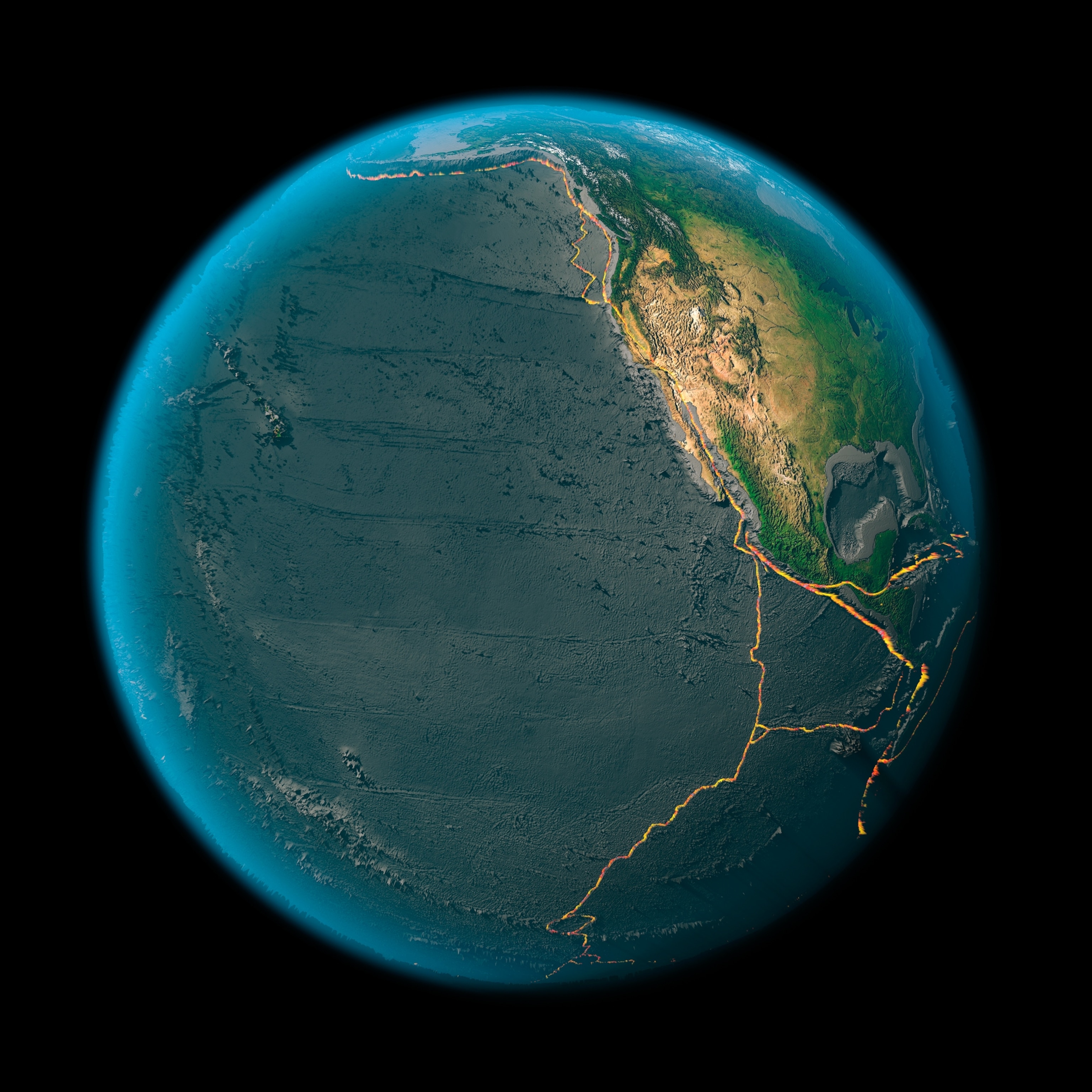
Scientists Warn of Quake Risk From Fracking Operations
Tremors induced by wastewater disposal are larger and harder to predict than previously thought.
Underground disposal of wastewater from fracking may pose a much greater risk of causing dangerous earthquakes than previously believed, particularly in areas of the U.S. Southwest and Midwest where earthquake faults have not been mapped extensively, seismology researchers said at a conference Thursday.
Worse yet, scientists are not yet able to predict which wastewater injection sites are likely to pose risks to buildings or critical structures such as power plants, and do not yet know what operators might do to mitigate the hazard. And new research indicates that the disposal wells are capable of affecting earthquake faults that are miles away from them.
The warning comes as evidence continues to accumulate that the activities associated with the North American oil and gas boom can lead to unintended, man-made tremors, or "induced seismicity," as researchers call it.
Fracking itself has been linked to quakes. More often, though, the cause is injection of fracking wastewater into disposal wells.
The scientists, who spoke to the press via teleconference from the Seismological Society of America annual meeting in Anchorage, said that more research into the relationship between fracking wastewater disposal and earthquakes is critical.
No Way to Forecast
"We don't know how to evaluate the likelihood that a [fracking or wastewater] operation will be a seismic source in advance," said Gail Atkinson, an earth sciences professor at the University of Western Ontario.
Atkinson is lead author of a new study that found that induced seismicity may pose "a significant and as-yet-unquantified risk" to the integrity of critical infrastructure, such as major dams.

"We don't know the maximum magnitude that could be generated, or the maximum ground motion," said Atkinson.
The fracking process, in which water, chemicals and sand are used to crack through rock to reach oil and gas deposits, results in large amounts of wastewater that has a high salt content and contains a variety of contaminants. (Vote and comment: "How Has Fracking Changed Our Future?")
Some of the wastewater is treated for reuse, while the rest is injected into deep disposal wells that are drilled thousands of feet into the ground. The EPA estimates that there are 144,000 such wells receiving more than 2 billion gallons (7.6 billion liters) of fluid per day.
The disposal wells generally are deeper than the fracking wells that extract oil and gas, so they actually have more potential to alter seismic activity in an area, the scientists said. (See related story: "Fracking Wastewater Disposal Linked to Remotely Triggered Quakes.")
In most instances, the wastewater injection wells don't appear to be causing any seismic activity, according to Art McGarr, a geophysicist for the U.S. Geological Survey (USGS) in Menlo Park, California.
But a small number of wells have been linked to earthquakes. In a paper released at the conference, McGarr and USGS colleague Justin Rubinstein found that a relatively high volume of wastewater and a high injection rate increases the likelihood of an earthquake powerful enough to be felt by humans. But the precise relationship between the amount of wastewater and earthquake intensity still remains elusive, McGarr said.
Chad Warmington, president of the Oklahoma Oil and Gas Association, told Bloomberg News in April that the link between injection wells and earthquakes is inconclusive.
Larger Quakes Than Anticipated
Scientists once believed that such induced quakes would be small enough to be little more than minor annoyances. But that thinking began to change after a 5.3 magnitude earthquake struck Colorado in August 2011, and a 5.7 magnitude earthquake rattled Oklahoma three months later. (See related story: "Scientists Say Oil Industry Likely Caused Largest Oklahoma Quake.")
A paper published in the scientific journal Geology in 2013 found that the tip of the Oklahoma quake's initial rupture plane was less than 200 meters (656 feet) away from injection wells, and concluded that years of injecting fluid into them had altered the pressure on the fault.
That paper's lead author, Cornell University geophysicist Katie Keranen, released a new paper at the conference, which found that four high-volume wastewater injection wells in Oklahoma had triggered a swarm of small earthquakes about 9.3 miles (15 kilometers) away. It's not necessary for wastewater in an underground reservoir to actually reach an earthquake fault directly, because "the pressure can travel," Keranen explained.
Atkinson would not say just how powerful an induced earthquake could be-"the sure way to exceed a threshold is to say you have one," she joked. But she said that even moderate-size earthquakes induced by injection wells might cause serious problems, because the quakes might occur relatively close to the surface, which could result in more intense ground motion.
"If you look at a typical earthquake in California, it's eight kilometers [or five miles underground]," she said. "If you induce an earthquake at two kilometers [1.2 miles] below the surface, ground motion is going to be a lot stronger."
It's difficult to predict where wastewater injection might increase the risk of earthquakes, because researchers' knowledge of where faults are located remains incomplete, USGS researcher Rubinstein said. That is a particular problem in regions with oil and gas exploration that are not traditionally thought of as earthquake zones, such as Oklahoma and Ohio, where scientists said fracking itself, and not wastewater injection, triggered a series of quakes last fall. USGS is just now beginning to gather and include data on induced seismic activity in its maps of seismic risk, he said.
"We might have earthquakes happen in places where they normally would occur over long time scapes," Atkinson said. "The earthquake that's triggered would happen anyway, but maybe it wouldn't have happened for 1,000 or 10,000 years."
(See related story: "Earthquake Study Points to Possible Carbon Injection Risks.")
This story is part of a special series that explores energy issues. For more, visit The Great Energy Challenge.








